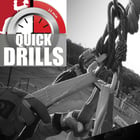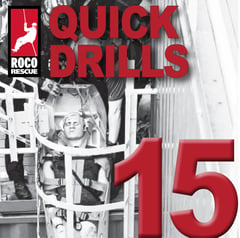
Each participant would be given all necessary equipment to complete the required tasks. Depending on the number of participants, and equipment on hand, evaluators would build the desired number of lanes to operate. Once participants have had a chance to look over the equipment, and ask any questions, evaluators would give each a set time to complete all tasks (e.g., 15 minutes).
Once time is started, each participant would complete the following:
- Build a fixed line system (evaluators would run a safety line and have the participant focus on main line systems only) and rappel down a single floor.
- Once on the deck, participants would hook up a patient/package to the main line.
- Patient can be a manikin in a Sked/stokes or a live victim in a harness.
- It could be an option to have the participant actually package the patient (would add more time to scenario, but would be good practice).
- Any other package could be used in place of a patient, this is up to the organizers.
- Once the patient/package is secured to the main line (again, the participant is not responsible for a secondary line), the participant would ascend back up to the starting point using their preferred method.
- Upon completion of the ascending portion, the participant would disconnect the fixed line system and create a hauling system to bring the patient/package up the single floor.
- Evaluators/other participants would assist with transitioning the patient/package over the edge for safety.
- Participants could either be allowed to choose a high or low-point anchor, or be given directions to use a specific anchor. This is up to the evaluator.
- Tag line personnel could be provided if necessary.
- Once the patient/package has been placed securely on the deck, the participant would transition the hauling system to a lowering system and lower the patient/package back to the starting point.
- As with the hauling system, evaluators/other participants would assist with transitioning the patient/package over the edge until system is loaded.
- Participants could either be allowed to choose a high or low-point anchor, or be given directions to use a specific anchor. This is up to the evaluator.
- Tag line personnel could be provided if needed.
- When the patient/package is securely back to the starting point, the exercise is complete. Evaluators will then critique/discuss the participant’s performance.
NOTICE: Based on the physical condition of participants, the heights and time limits may need to be adjusted. The basis of the exercise is to have an individual build a system to rappel, reach a patient, attach the patient to the system, ascend, and convert to a lowering system.
Check out more Roco QUICK DRILL Challenges

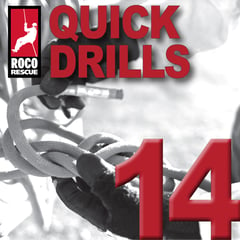
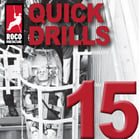
 Many rescue scenes (and teams) are plagued by confusion because of too much communication. And, if you have three people assigned to do a task, each one will have his or her own idea of how it should be done, where the system should be anchored, etc. Many times the discussion that follows eats up valuable time and slows the team’s ability to get rescuers into a location and get hands on the patient.
Many rescue scenes (and teams) are plagued by confusion because of too much communication. And, if you have three people assigned to do a task, each one will have his or her own idea of how it should be done, where the system should be anchored, etc. Many times the discussion that follows eats up valuable time and slows the team’s ability to get rescuers into a location and get hands on the patient.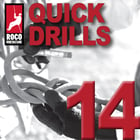
 Quick, efficient patient packaging is a crucial factor in every rescue. Generally, if spinal injury is suspected, two rescuers will be needed to properly manage and package the patient for movement.
Quick, efficient patient packaging is a crucial factor in every rescue. Generally, if spinal injury is suspected, two rescuers will be needed to properly manage and package the patient for movement. 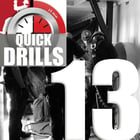
 One of the skills that separates a good team from a great team is patient handling; how quickly and efficiently a patient can be packaged for movement. Patient packaging and lashing is one area that can save a lot of time during a real rescue. This becomes even more critical when rescuers are wearing SCBA. Good patient packaging skills can significantly reduce the time rescuers and the patient are exposed to hazards.
One of the skills that separates a good team from a great team is patient handling; how quickly and efficiently a patient can be packaged for movement. Patient packaging and lashing is one area that can save a lot of time during a real rescue. This becomes even more critical when rescuers are wearing SCBA. Good patient packaging skills can significantly reduce the time rescuers and the patient are exposed to hazards.